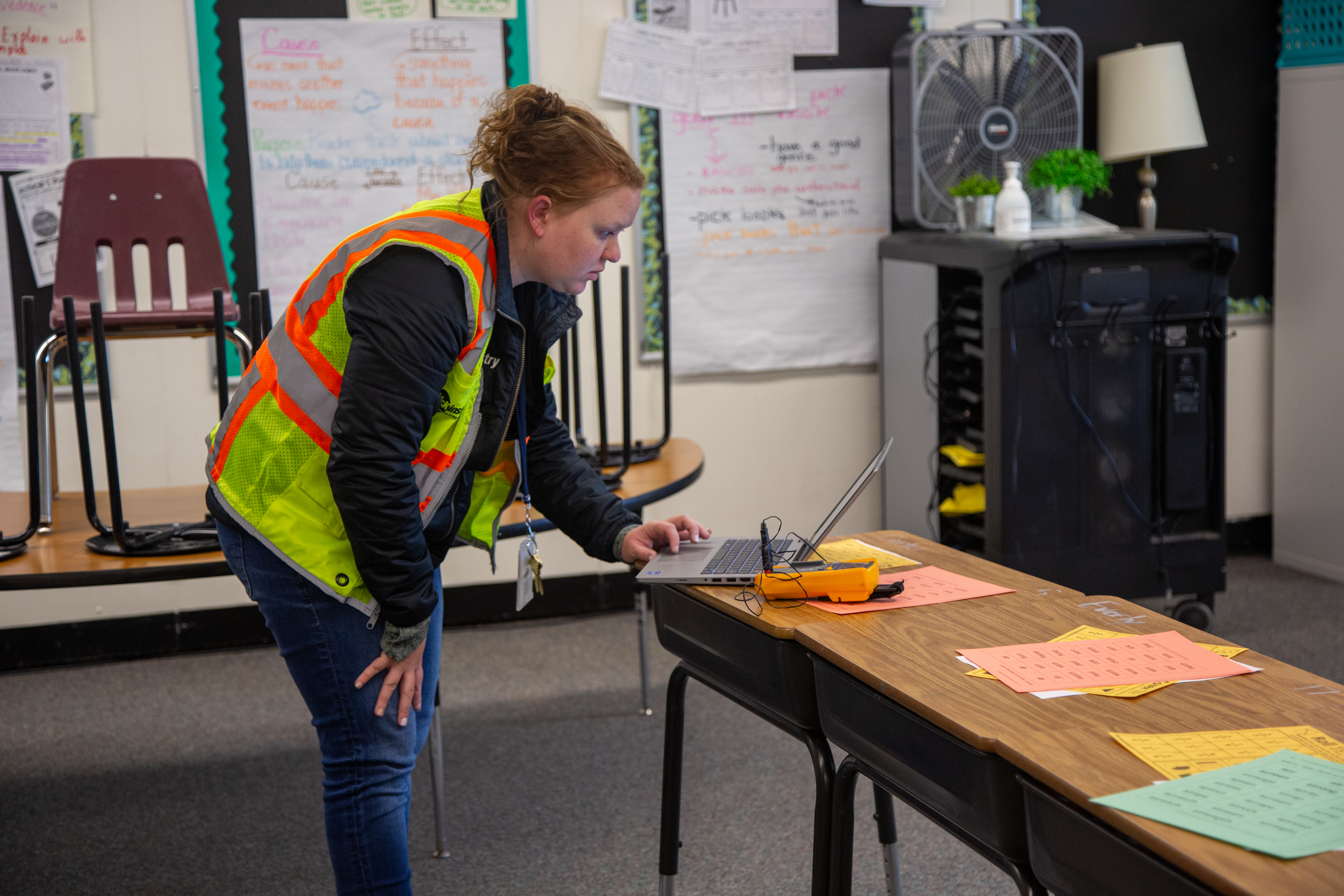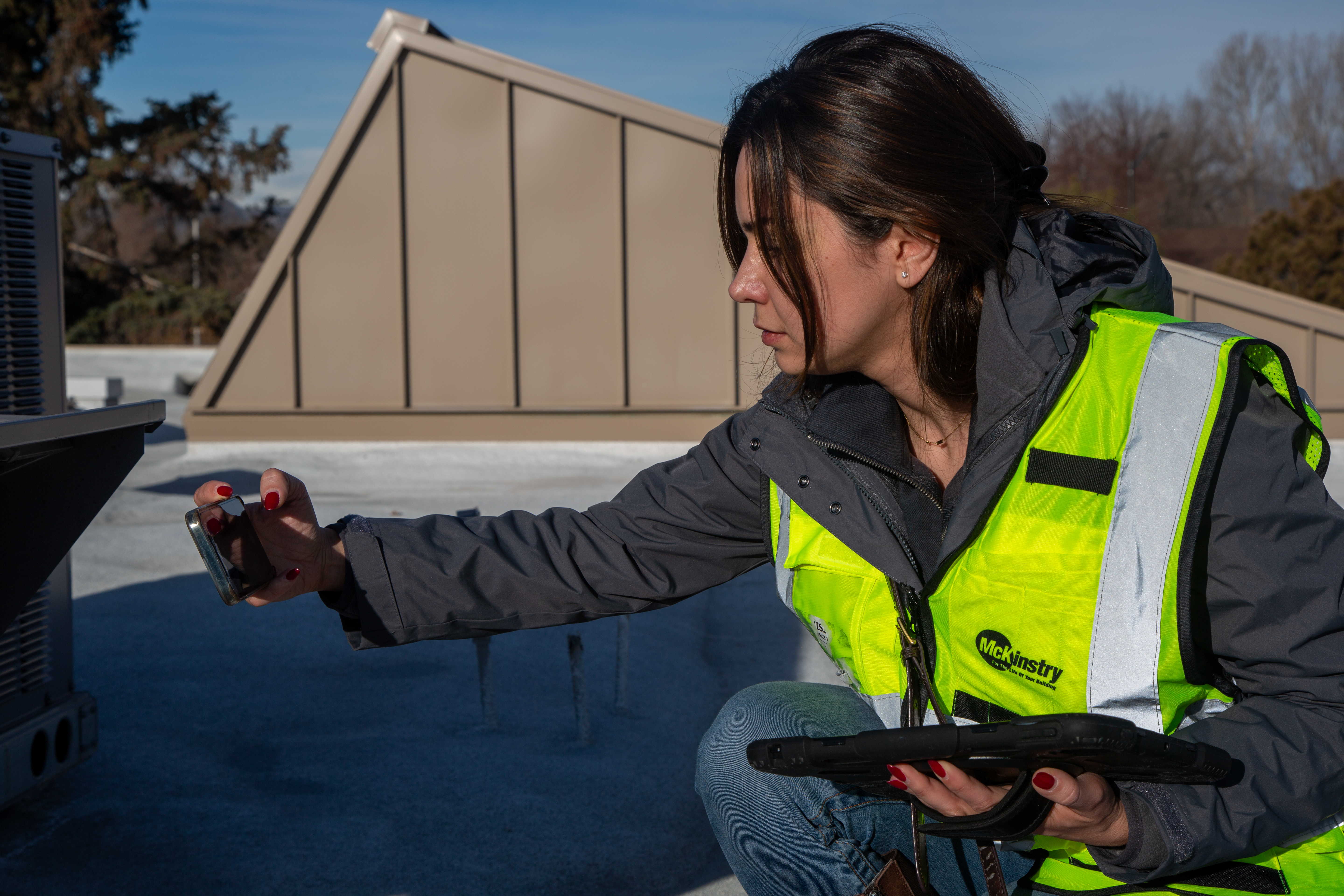Poudre School District runs 73 facilities, including schools, program sites, office buildings, and athletic facilities. PSD values being a responsible steward of its sites and the public dollars that fund them. In keeping with that value, the district set out to discover new ways to operate each building as efficiently as possible and hired an independent third-party firm through a competitive process.
The facilities design and maintenance firm, McKinstry, began conducting an analysis of the district’s buildings and systems during the 2022-23 school year. These studies will continue into the first half of the 2023-24 school year. The information in the studies will help PSD with its long-term planning for facilities maintenance.
Once completed, McKinstry’s analysis will include a solar feasibility study, air conditioning feasibility study, facility condition assessment study and a retro-commissioning study. McKinstry presented the results of its solar and air conditioning studies to the PSD Board of Education in August and September, respectively. The PSD Facilities Studies web page will be updated as each study is completed.

Air Conditioning Feasibility Study
McKinstry and PSD staff presented the firm’s air conditioning feasibility study at the Sept. 26 Board of Education meeting. The main takeaway from the study are that PSD would have to spend up to approximately $268 million to install air conditioning in the 36 buildings currently without A/C. It would take a minimum of seven years to do this work, McKinstry estimated, if funding were to be secured and the project began in 2025 and the equipment needed was available.
Keeping in mind the age of each building, existing systems, and any electrical or structural changes that might need to be made, McKinstry’s team determined the feasibility and cost of installing mechanical cooling in the 36 buildings it studied. They verified the information from a 2015 study by Horsetooth Engineering, walked each facility, and used both sets of information to come up with current-day estimates.
Some of the key points from the study include but are not limited to:
- On the higher end, McKinstry estimates that the total cost will be roughly $225 million in today’s dollars. Accounting for 3% inflation if the project takes seven years to complete, the cost could be closer to about $268 million.
- McKinstry recommended installing heat pumps, a type of mechanical cooling system, in most of the buildings. This type of system is highly efficient and during the spring and fall when some spaces require cooling and others require heating, the system can absorb excess heat from one space and move it to another space that requires heating. Many of the 36 buildings have a central heating system, and the heat pumps can be tied in with existing infrastructure. This would also help to standardize systems across PSD. This type of system also would create the least amount of disturbance to existing spaces.
- This project will take time. Even if five buildings were updated each year (which is on the higher end of what McKinstry believes would be feasible), it would take a minimum of seven years to put A/C in the 36 buildings.
- Start to finish, McKinstry estimates it would take two to three years for installation of A/C in each building. Most of the work would happen in summer months, but crews will likely take advantage of other times when students are not in school,
- Some people may wonder why it takes this long. McKinstry said there are a couple of factors, including the amount of equipment that will be required, lingering labor and supply chain delays, and the older age of some schools. It takes more time to update an existing facility than it does to build a new one.
As of September 2023, PSD does not have the funding for this project and would need future voter support in order to do this work. The district’s current budget for building improvements is approximately $800,000 annually.
Solar Feasibility Study
McKinstry and PSD staff presented the firm’s solar feasibility study at the Aug. 8 Board of Education meeting. In spring 2023, McKinstry started to look at whether it’s possible to install photovoltaic or battery energy storage systems at 61 PSD facilities. As part of this, McKinstry assessed whether ground, carport canopy, and roof-mounted solar arrays could be installed.
McKinstry determined there are a handful of sites where it is technically feasible to install solar systems and many more where it may not be, due to limiting factors such as the utility serving the school, roof age, available land, parking lot size and structural capacity. The cost to add solar to PSD’s facilities would be millions of dollars that the district does not currently have.
No decision has been made about whether to move forward with this project. McKinstry’s complete study is available on the PSD Facilities Studies web page.

Facility Condition Assessment
McKinstry’s facility condition assessment will take stock of the current state of PSD facilities through documenting, analyzing and benchmarking current PSD assets. This data can then be used to create an actionable plan that can inform PSD’s facilities planning and decision making.
Once complete, the information from this assessment can be used to help with:
- Informing capital planning and construction decisions by determining what needs to be replaced, how long assets last and providing replacement cost.
- Highlighting high performing assets, which are assets working better than expected or lasting longer than usual.
- Informing repair/replacement decisions.
- Effective preventative maintenance, which means knowing the details of the building: knowing what you have, making sure you know the size of the building, and whether you are appropriately staffed to do that work.
- Better warranty tracking.
- Identify preventative maintenance schedule and opportunities to maximize the lifespan of critical equipment.
- Assess key building components to ensure that we maintain continuity of operations.
- Inventory management.
Retro-commissioning
Retro-commissioning is a systematic process for optimizing a building’s operations. McKinstry explains this as making improvements to existing equipment and systems to maximize energy efficiency in the building, reduce costs, and create a more comfortable environment for people in the building.
McKinstry began this study by collecting information at sites and conducting site walks to present options for facility improvements, focusing on no-cost or low-cost measures.
Once the study is complete, it could offer ideas for:
- Reducing operating and maintenance costs
- Improving indoor air quality through more efficient HVAC operation
- Improving equipment life and reducing system failures
- Providing greater occupant comfort and productivity
This study is still in process and a progress report will be provided in December 2023.
All of these studies will offer valuable insights and ideas for improving the experience in PSD buildings for students, staff, and community members. However, these large-scale and impactful changes will be out of reach for PSD’s capital budget, which is about $800,000 per year. As a result, the district anticipates future voter support will be needed to implement the changes and additions offered by McKinstry’s studies.


